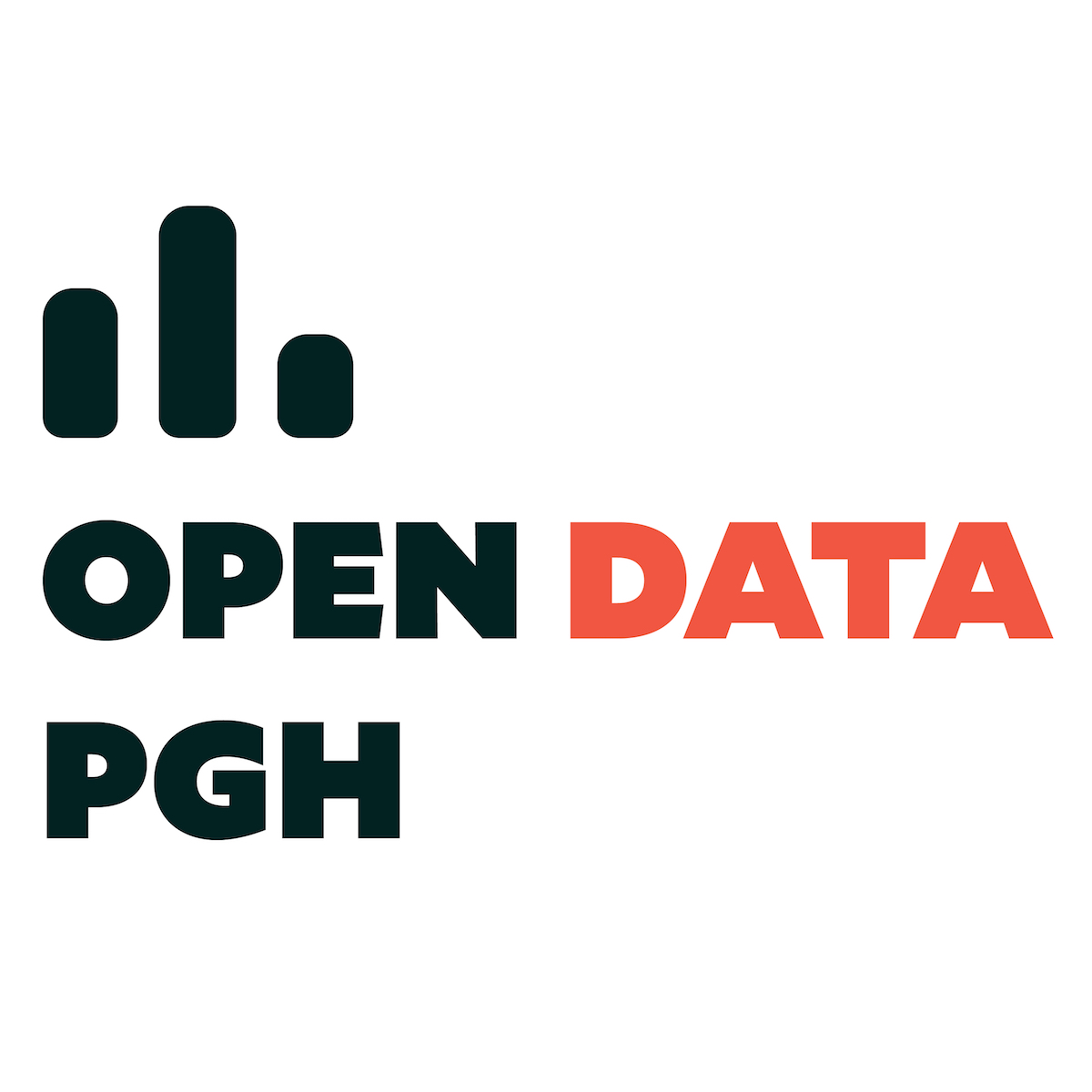This story appears as a part of Open Data PGH, a joint reporting project by Technical.ly and PublicSource on open data trends in Pittsburgh, underwritten by Heinz Endowments. Learn more here and get updates here.
When Hollen Barmer started attending Lenten fish frys in Pittsburgh, she realized she had a problem. There were so many fish frys, so little time, and no way to track them all.
So Barmer, a writer and editor at the Emerging Technology Center at Carnegie Mellon University’s (CMU) Software Engineering Institute, created a Google map of all the fish frys she could find in the Pittsburgh Catholic newspaper. That was in 2012. The following year she created a Facebook page, and eventually parishes were sending her their fish fry information.
She brought the map to Code for Pittsburgh for an update in 2016, and it’s now searchable down to whether a fish fry has pierogies or not.
If you ask people in Pittsburgh to describe the area’s civic tech scene, you get a variety of adjectives: decentralized, grassroots, fragmented, distributed. Even those working in the space agree there isn’t one centralized organization that oversees everything else.
But that’s OK, they say, because it leads to projects — such as Barmer’s fish fry map — that are uniquely Pittsburgh.
I really see civic tech being a tool for activism.
“I really see civic tech being a tool for activism,” Barmer said. She’s thought about future iterations of the map that would have information about routes to neighborhood fish frys with the fewest potholes.
“Of course we sort of joked about that, but if you think about what that would show: Would it highlight an area where there aren’t a lot of resources for filling potholes?” she said. “When you put information like that on a map, it becomes a picture for people to see that information and it becomes powerful and undeniable. There are all kinds of visualizations that can help people understand complex problems.”
Laura Meixell is assistant director of digital services for the City of Pittsburgh’s Department of Innovation and Performance (I&P). She said the fact that Pittsburgh’s civic tech community is distributed is a strength, and it builds on the area’s tradition of grassroots institutions.
“A lot of people who are the center of a lot of this work have an affiliation with a neighborhood group or a special interest like biking or gardening or environmental justice,” she said. “I think that’s exciting because then you get people who come to us with a public sector mission and the list of passions they want to work on. What we provide is help to those people for whatever their mission is and let technology and data be a tool for them.”
Bob Gradeck, a cofounder of Code for Pittsburgh, is project director at the Western Pennsylvania Regional Data Center (WPRDC). The WPRDC, founded in 2015, provides infrastructure for distributing data sets, acting as the open data portal for the City of Pittsburgh and Allegheny County, public sector agencies, universities and nonprofits.
It has mostly automated processes that update the data sets, sometimes pulling the data whenever a database is updated by an agency, or when a department sends a new set to WPRDC. There’s a wide variety of data, from Pittsburgh police arrests and Allegheny County dog licenses to Allegheny County air quality and city revenue and expenses.
We help people make use of information about their community, by making info available and accessible.
“We consider ourselves data intermediaries,” Gradeck explained. “We help people make use of information about their community, by making info available and accessible.” That may mean using data to help improve a community or a service — “maybe it means not having to wait for bus as long.”
Gradeck pointed to civic tech organizations in Philadelphia and Chicago as examples of robust communities that have experience in the space, but said the fact that Pittsburgh wasn’t at the forefront of the civic data movement has ended up being a good thing for WPRDC in many ways.
“We moved from behind which was actually really good for us,” he said, because it allowed the local early adopters to seek out best practices from other cities and build something that would work for the existing ecosystem.
The top priority was building a legal and technical infrastructure, because “we might build shiny things or we might sign a contract that gives us a nice-looking website, but that’s not necessarily going to make it easy for everybody to share data and not going to make it easy for people to publish data in a way that is going to remove the burden from their staff,” Gradeck said. “We didn’t want people to feel like they were publishing data into a void.”
The WRPDC isn’t behind anymore, he said; now, the challenge is making sure people are aware of all the data that’s out there.
Michael Madaio, the assistant director of data projects for Students for Urban Data Systems, agreed that the civic tech scene in Pittsburgh is not centralized, but thinks of it as distributed rather than fragmented. Part of what SUDS does, he said, is provide a data consultancy for nonprofit organizations. For instance, the group is working with the education nonprofit Remake Learning to find low-income areas that would benefit from its informal learning spaces and after-school programs.
SUDS’ purpose is to try to connect students with organizations and civic agencies around Pittsburgh that have a data project they need help with, and conduct data analysis that will have an impact. Founded in 2015, SUDS has more than 100 members representing five Pittsburgh-area colleges, and includes students across disciplines, from urban design to engineering to public policy to philosophy. It has focused on some very Pittsburgh issues, including sewer overflow problems and bike usage.
Organizations will come to us with data they have been collecting for years and don’t have the capacity to interpret.
“Organizations will come to us with data they have been collecting for years and don’t have the capacity to interpret,” Madaio said.
One project that came out of this decentralized data community was SUDS’ partnership with the Alliance for Police Accountability. The resulting storytelling-series-slash-data-analysis relied on data sets from the WRPDC’s police blotter, reports from the Department of Public Safety and Allegheny County Jail and U.S. Census data; held meetings at Carnegie Library locations; and enlisted the aid of Code for Pittsburgh — all for a project aimed at improving police-community relations.
“It’s a really nice example of all the synergistic relationships can help build bridges with stakeholders,” he said.
Meixell said there were challenges building the I&P department based on what the city already had — or didn’t have, such as infrastructure for open data collection and distribution. But she said she and her team focused on the idea of technical dignity, so that city employees and citizens feel dignified in what they’re doing, not confused or intimidated.
Her strategy to try to win people over internally has been to bring people “presents,” such as a map of the data a given department may care about.
“That sparks a conversation about the systems we use to collect that data, so we’re not just talking about data abstractly,” she said.
She added that the city is inspired by the way Portland manages its enterprise data, with its Portland Urban Data Lake — “but while they call theirs a data lake, we’re calling ours a data river because of our three rivers and because, with ours, data is always flowing and updated with new fresh data.”
Barmer, who doesn’t have a background in programming, said her plans for future iterations of the fish fry map may include some kind of sustainability aspect; fish frys use a lot of styrofoam and disposable utensils, and some map users have asked about how to include this information.
This doesn’t require her to have a background in coding or data science, she noted.
“I think it’s important for people to see that there are a lot of different roles in a project like this,” and that it’s OK to be unsure at first, she said. “Don’t think that you can’t be part of the conversation.”
Join the conversation!
Find news, events, jobs and people who share your interests on Technical.ly's open community Slack





